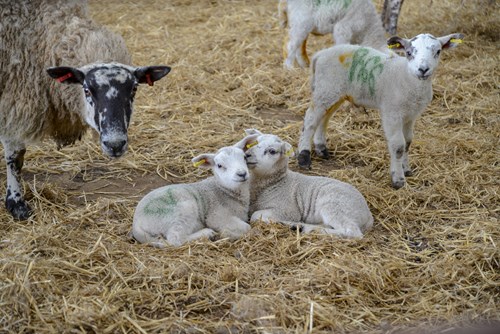Farm Safety During Lambing Time

Lambing has begun for many and just around the corner for others. With so much focus on looking after stock, and a motivation to ‘get through lambing’, it can be difficult to look after ourselves. I appreciate this is most certainly a challenge during busy periods, but nevertheless whether lambing indoors or outdoors, it is important to identify and reduce potential health and safety risks for all those involved.
A Health and Safety Authority (HSA) document, stated that the main risk factors associated with back pain and musculoskeletal disorders among the farming community were; lifting heavy loads, awkward postures, lifting loads to a height or ground level, repetitive movements and poor workplace set up. Some of these can be present on sheep farms, particularly during lambing time.
The farm safety document states that planning, organisation and sufficient facilities can help lower these risks and ensure tasks can be designed, managed and controlled more effectively. The document highlights the following tips for reducing safety risks and easing workload.
- Ensuring good fencing, handling equipment and penning in the field or passes into a shed, will ease catching of sheep which require assistance when lambing outdoors.
- For lambing indoors, dividing the shed into subdivided pens will create more manageable groups. Individual pens should be located adjacent to group pens.
- Lighting is also very important – ensure sheds and passageways are well lit and lighting and wiring is regularly checked by an electrician.
- Lambing cameras are a great tool for monitoring stock from a distance, as well as reducing workload and associated fatigue.
- Reduce animal stress wherever possible.
- Reduce handling of pregnant ewes as much as possible by ensuring correct ewe body condition, nutrition and sufficient feeding space. This will help reduce the need for assisted lambing. When assistance is required, ensure gates are set up and available to help catch the ewe in a controlled, low stress manor.
- Obtaining assistance to hold the ewe in the correct position will reduce the risk of twisting and bending of the back, helping to reduce possible back injury to the handler.
A recent National Farmers Union (NFU) article also highlighted the following top tips when considering farm safety during lambing:
- Take care when manual handling.
- Take care when administering injections and other medications.
- Be aware that sheep may be unpredictable, leading to injury.
- Good hygiene is essential, particularly during lambing and especially if you interact with a pregnant person.
- Reduce slips, trips and falls by keeping walkways clear, and handle sheep in small and enclosed areas.
Working longer hours, with disturbed and low sleep levels increase the possibility of exhaustion. Exhaustion may then result in tasks taking longer to complete and increased risk of mistakes, potentially resulting in injury. Try to manage exhaustion by maintaining energy levels with good food, take rest breaks wherever possible and try not to rush tasks.
Remember it is essential to wear appropriate personal protective equipment (PPE) whenever necessary.
Useful Links
Take care, and happy lambing.
Rebecca McBain, Consultant, Rebecca.McBain@sac.co.uk

Unearthed is the exclusive SAC Consulting members' monthly newsletter. Unearthed offers insights and tips from our experts on what we think is in store for farming and crofting in the coming months in order to protect and enhance your business.
Posted by Unearthed News on 13/03/2025
